1. China’s socialist market economy functions on two main levels:
-The core, state-owned economy managed directly by the state at the national or local level, or through Party committees/other mechanisms.
-The private economy which is relegated to low-margin commodity industry
2. Theoretical basis for the socialist market economy was first laid out by Lenin describing the New Economic Policy program which introduced market reforms to the central planning system.
Vince Sherman 2011, “China & Market Socialism: A Question of State & Revolution”
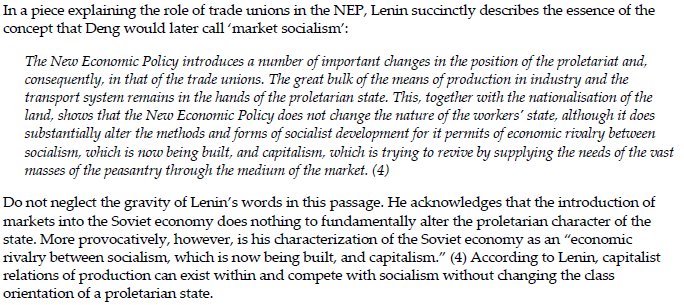
3. More Lenin, laying down the law on the anarchists. Ibid.

4. Deng Xiaoping, the founder of China’s socialist market economy (SME), emphasizing that the transition to higher stage socialism and communism *requires* a higher level of productive forces, which China lacked and still does today despite all the progress. Ibid.

5. More Lenin on state capitalism. Note that for China, especially today in a world where capitalist countries have a much higher level of productive forces than the socialist bloc, this system provides benefits..
Sitaram Yechury, “Chinese Revolution: Evaluating the 60 Years”
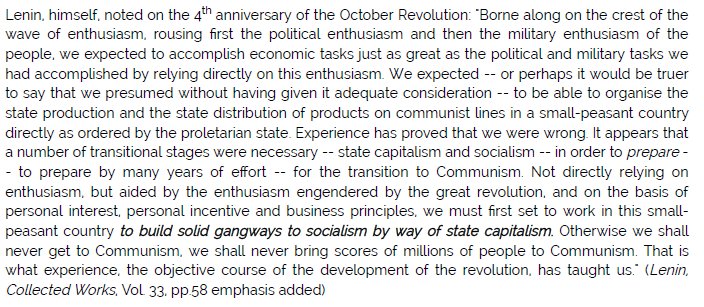


6. … Benefits afforded by the socialist market economy which allows for trade and foreign investment include:
-Technology transfer
-Trade for needed resources
-Organizational knowledge
-The ability to effectively “export” the SME (see Belt and Road Initiative)
7. So, how big is the state-owned, core economy? Estimates of this are difficult because beyond direct owned enterprises, there are collectives, companies with state-owned subsidiaries, companies with Party committees mandated by their charter (more on this later)…
8. However, the most comprehensive study I’ve seen on the size of the state-controlled economy puts it at approximately 50%. And this number may likely be severely underestimating Party influence in officially “private” enterprises. Szamosszeg, 2011

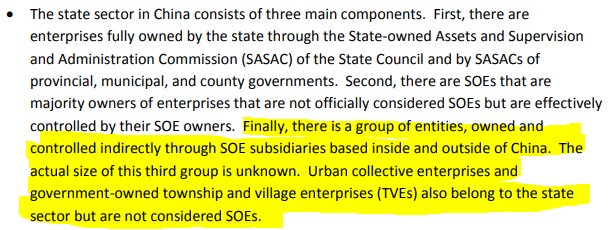
9. So, let’s get more concrete. In China, non-financial core state owned enterprises are controlled by the State-owned Assets Supervision and Administration Commission (SASAC) which reports to the State Council.
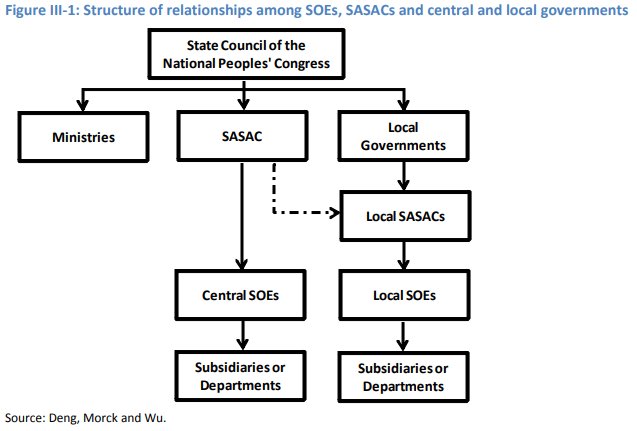
10. In 2017, the SASAC controlled state-owned enterprises posted combined revenues of 23.4 trillion yuan or USD 3.6 trillion. This makes the SASAC the world’s largest single economic organization. For comparison, the entire Eurozone in 2016 posted GDP of USD 11.8 trillion.
11. Here’s the top 10 of the Forbes global 500. 3 of the top 4 companies are China’s SOEs. Overall, China’s SOEs include the world’s largest (or near top)
-Telecom
-Energy co
-Bank
-Infrastructure co
-Rail co
-Metals co
-Shipping co
-Mobile telecom
-Auto companies
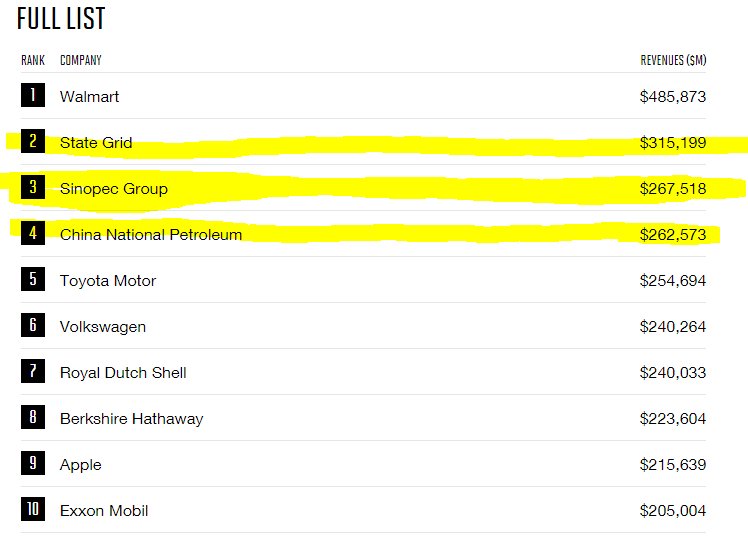
It should be obvious, but the fact that some of the largest economic organizations and enterprises in the world are controlled by a worker’s state is a major asset to the socialist movement globally. Imagine how different the struggle against capital would look if these enterprises were under the control of the international bourgeoisie?
12. Speaking of banks, four of the world’s largest banks are Chinese SOEs. This is an essential mechanism the state uses to control the entire Chinese economy, state and private.
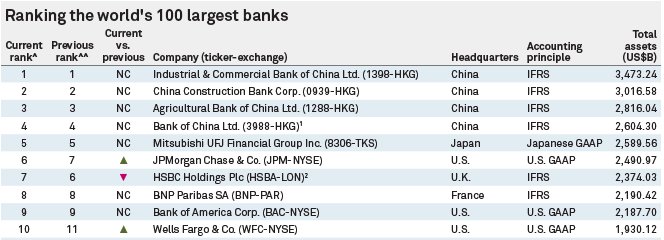
13. Some additional figures on China’s core SOEs.
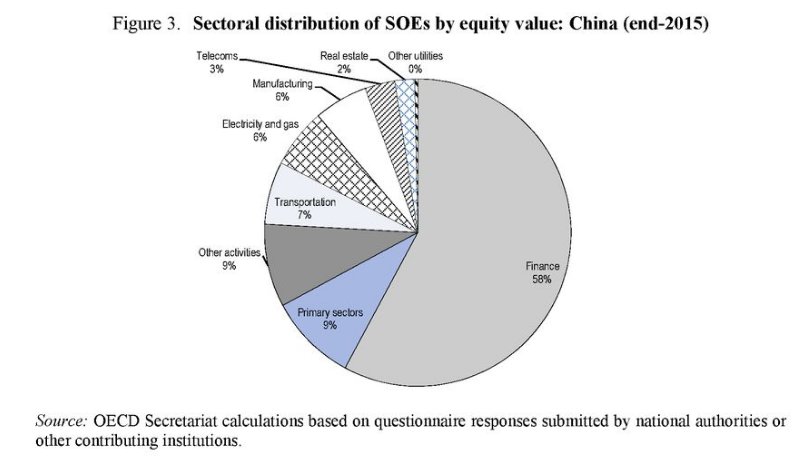
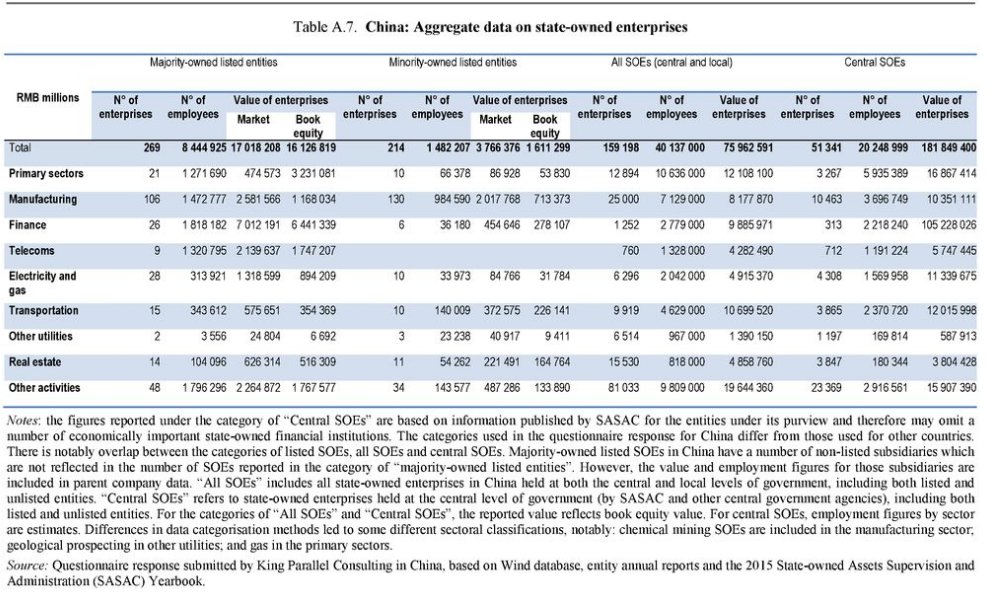
14. Where is the system headed? By all evidence, the Chinese economy is moving back towards a greater and greater share of state control, since commodity production is where the private sector dominates, and that sector will shrink vis-a-vis a rising high tech/services sector.
15. These high-tech and service industries are dominated by state enterprises and state investment. Let’s look at what some capitalist observers are saying to each other about the latest trends in China. Here’s uber-capitalist Nicholas Lardy in 2017 to his peers:

16. So, foreign capitalists are increasingly feeling less welcomed in China. Lardy notes a dramatic fall in private investment relative to state investment, from 2.6x to 0.3x of state investment.
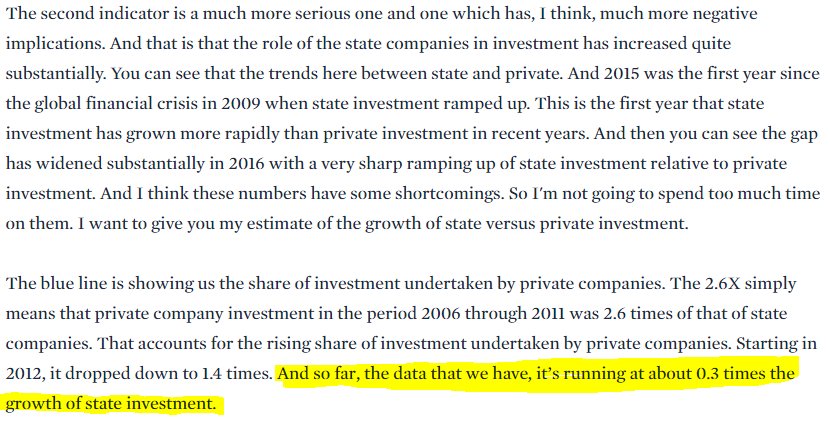
17. Lardy again. State investment in services is 5.5x what it is in the manufacturing sector, and that money is almost exclusively going to state enterprises with favorable terms, thus “crowding out” private capital. Again, services are the future of the Chinese economy.
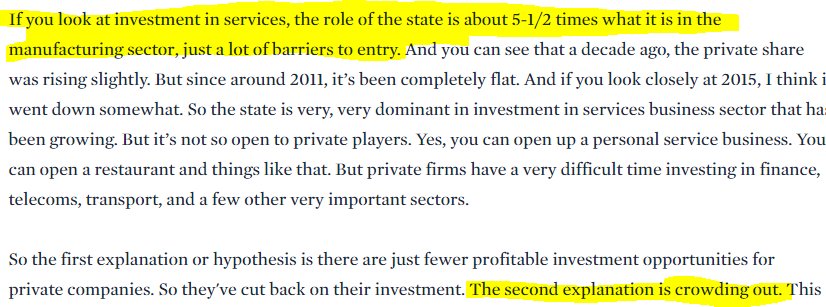
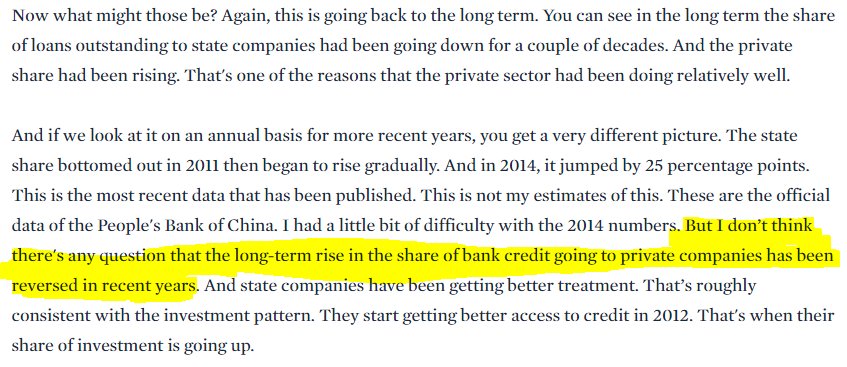
18. Finally, we have the CPC under Xi Jinping starting to actually write themselves into the charters of both state owned and private companies. In 2017, at least 200 companies did this. This is a brand new phenomenon.
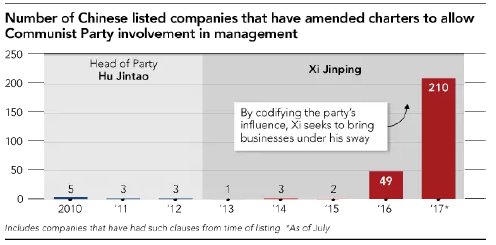
19. Here is an excerpt of what this language looks like. Effectively the company is put under the direct control/oversight of the Party and serves as a grounds for Party organizing. This is all happening with & beyond the state apparatus.
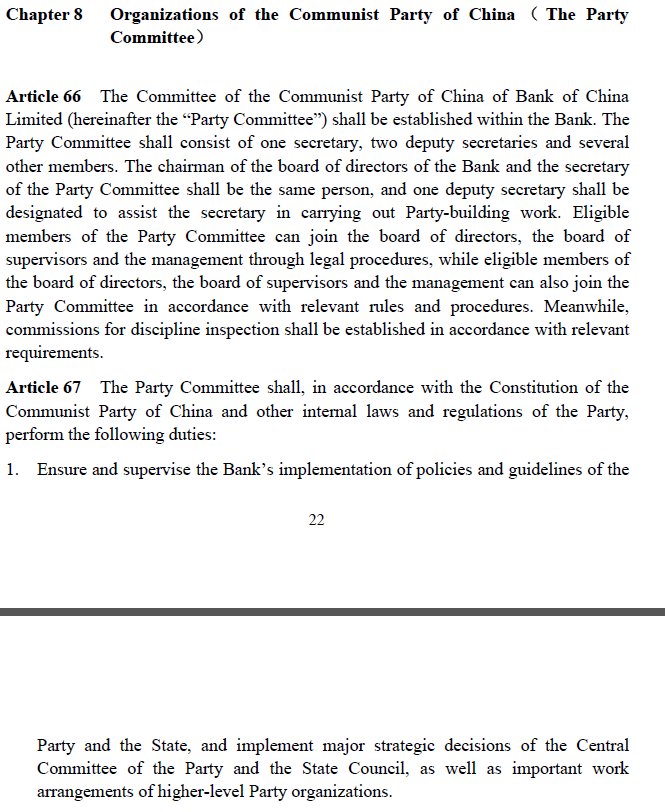
20. In summary, we can see that structure and scope of China’s socialist market economy is changing and evolving, with evidence pointing towards greater Party and state control under current leadership.
Further points on CPC committees in “private companies”: We have to take a closer look at how the “private” sector of China’s SME actually works. There are increasing reports of CPC committees taking a greater role in company management. Some estimates place the share of companies with CPC committees as high as 68%.

